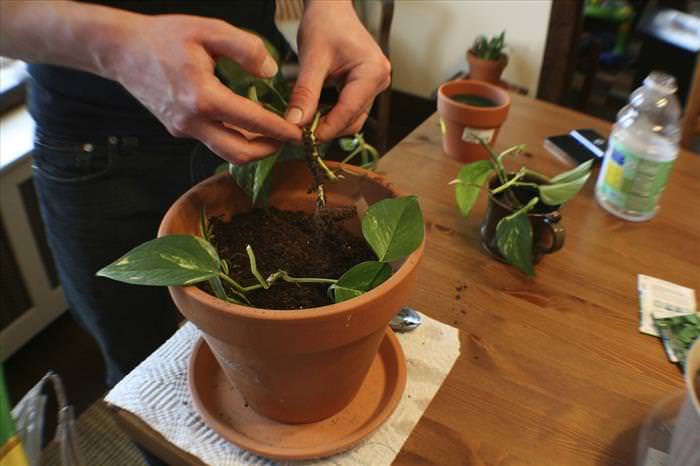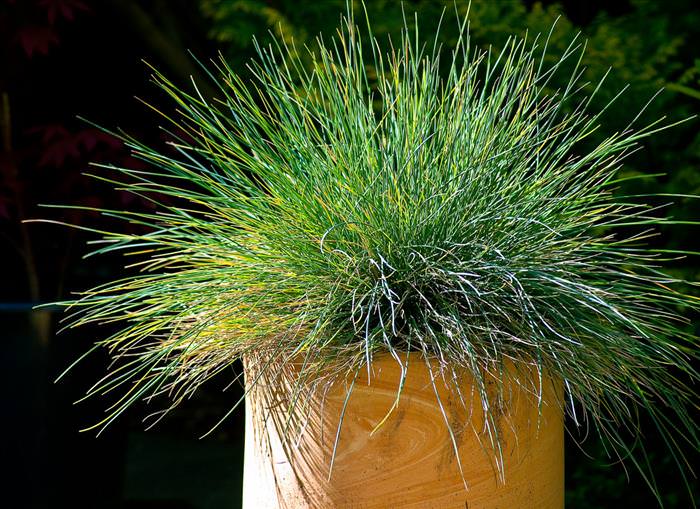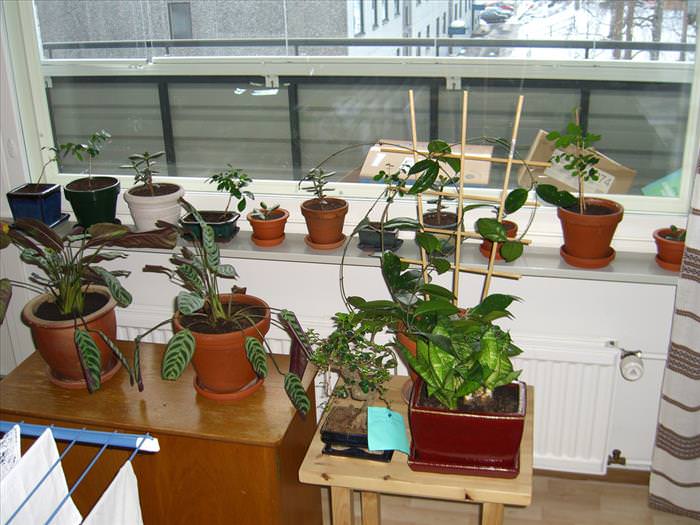
|
I've always been a firm believer in having potted plants in my house. Not only do they make it look better, they improve air quality, help stave off illness and just make it a nicer place to be. Here's how you get spectacular potted plants in 11 easy steps: |
|
1. Use pots with holes at the bottom It’s essential that you use pots that have at least one hole at the bottom so water can flow out freely when watering. If draining is insufficient, a plant’s roots will likely drown, causing it to die prematurely. 2. Invest in potting mix Don’t bother using soil out of your yard or garden for your potted plants, because it can be filled with weed seeds, insects and fungal diseases. The best thing to do is head to your local garden center and and buy a potting mix that contains a time-release fertilizer and moisture-retaining polymer crystals. 3. Choose the right plant for your space or spaces It’s not good placing a potted plant that requires six hours of full sunlight per day in a space in your home that only receives a maximum of one or two. Do your homework to find out which plants work best in certain spaces, or ask staff at your local garden center to make a recommendation with regard to the plants you should choose for a particular space. 4. Stand your pots where you plan to keep them This tip is particularly relevant if you’re going to be using large pots, because they may be too heavy to move once you’ve filled them with your potting mix and and watered them.
5. Place coffee filters or broken pot shards at the bottom of your pots Doing this will stop your potting mix from flowing away once you water your plants, but still allows water to flow away as needed. 6. Check your potting mix’s correct moisture content before pouring it Read the directions on the bag of potting mix you’ve bought to find out how to wet it properly. As a general rule, you need to add water just a little at a time and knead the mixture with your hands until it feels like a damp sponge. 7. Fill your pots with the potting mix Fill your pot or pots until the top of the soil is an inch lower than the top of the pot. Pat down the soil lightly with your fingers to eliminate any air pockets, but don’t pat down too hard. 8. Pot your plants Remove your plant or plants from their nursery containers. Support the top of the root ball, which is the semisolid mass of soil and roots, by placing a finger on each side of the stem. Tip the pot and let the plant fall gently into your hand. Do not pull the plant out by its stem. Next, carefully pot your plants, ensuring the stem is completely exposed. Water your pots after you’ve potted your plants. If the soil level drops down past the top of a plant’s root ball, add additional potting mix to bring it up back to a level that’s one inch under the height of the rim of your pot.
9. Water your plants correctly If you’ve planted in spring and the weather is mild, water your plants just once per week. As summer starts to come around, however, you need to up this to twice per day – preferably once in the morning and once in the evening. Water until the water comes out of the draining holes in your pots. Doing so ensures that your soil is moisturized all the way through to the bottom. Don’t water the leaves and flowers of your plants, because you could make them ill with fungal diseases. 10. Feed your plants Buy a liquid or water-soluble fertilizer and fertilize your plants every couple of weeks, in line with package directions. 11. Deadhead your plants every so often Pinching or cutting off a plant’s faded blooms from time to time is essential for its health and appearance, and encourages it to produce more flowers. In the event that your plants have many tiny flowers, making deadheading too consuming, shear them back to one-third of their size to encourage a flush of new buds and blooms. Content Source: RealSimple |
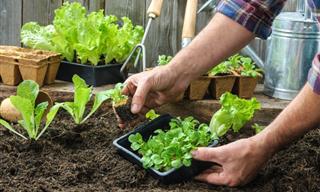
How to Create a Low-Maintenance Garden
This guide will provide practical advice on designing and maintaining a low-maintenance garden, from plant choices to time-saving techniques.
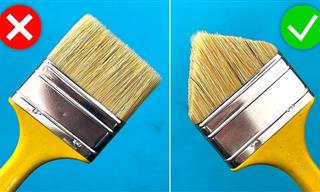 3:20
3:20
6 Tricks Painters Know and You Should Too
Here are 6 tips that will help you ensure you do it right, with results no less than perfect!
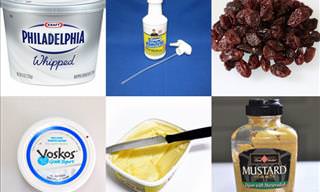
10 Surprising Grocery Products You Didn't Know You Can DIY
Did you know you could also DIY products like butter, mustard, and deodorants? Learn these useful recipes to reduce the load of your grocery shopping!
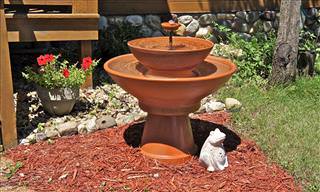
Re-purpose Your Old Clay Pots Into Something Special!
Clay pots are rather mundane things if there isn't something quite spectacular growing out of them, but you can use them to make something amazing...

Here's How to Make Caramel From Scratch At Home
We all love caramel, but did you know that it's pretty easy to make at home? Here's how to do it!
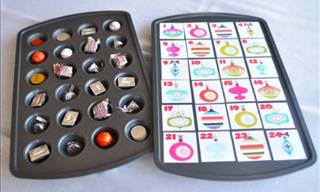
Give Your Old Bakeware a New Lease of Life With This Guide
Many of us are guilty of letting bakeware pile up in our cupboards, but this guide will show you how to give it a new lease of life. See these 10 great ideas.
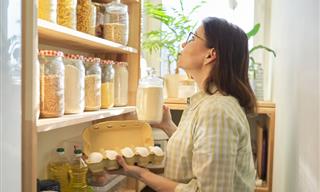
Decanting 101: Tips to Simplify and Organize Your Space
Read on to discover how decanting can help you organize your living space.

The 7 Biggest Mistakes People Make With Their Wills
Make sure your heirs get what you want them to get by not making these mistakes.

These Tips Will Make Your Next Flight a Lot Better
In this video you will find 6 great tips that will ensure your next time on a plane is a lot more comfortable.
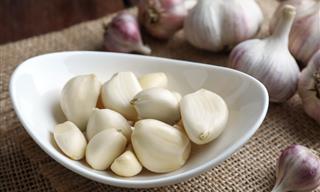
These Surprising Garlic Uses Show It's More Than Just Food
While garlic is an important ally for natural health, it has many more functions. Check out these 14 unusual alternative uses for garlic.

Your Body Can Do More Things For You Than You Ever Knew
If you suffer from the odd ache and pain, you'll be glad to know that you can make them go away simply by knowing these 14 fantastic body hacks.
 10:13
10:13
10 Airport Secrets That Will Save You Time And Money
Here are the tricks, scams, and hidden travel hacks that every passenger should know before their next flight.

7 Mistakes We Generally Make While Arranging Furniture
Here's a look at some furniture arranging mistakes you should always avoid and how you can fix them.
 9:08
9:08
An Easy and Affordable Makeup Tutorial for Older Women
Kerry-Lou, a makeup artist, will explain how to do a natural-looking makeup look so that you look fresh-faced, but not overly made up.

9 Easy Ways to Ensure You Get Enough Water Each Day
Water is so important, but so many of us don't drink enough of it. Below are 9 tips that'll help you consume more water.
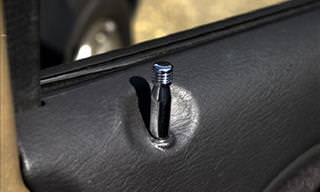
Locked Your Keys inside Your Car? You Need This Hack!
If you've locked yourself out of your car, this neat trick will help you solve your problem.
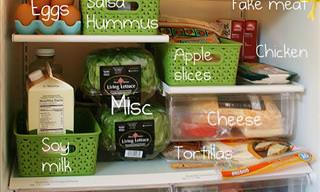
10 Tips for Organizing Your Fridge That’ll Save Time & Money
A tidy fridge will save you both time and money. Follow our 10 tips to organize your fridge and see the difference it makes to your life.
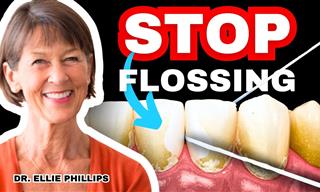 29:09
29:09
What Dentists Don’t Always Tell You About Flossing
There’s a lot more to flossing your teeth than you were told...

12 Things Every Cat Owner Should Be Aware Of and Care Tips
Cat care may not seem terribly complicated, but there are some important moments that even experienced cat owners miss...
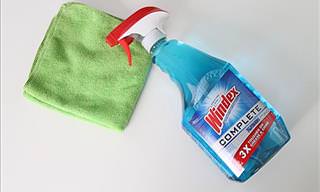
You Can Use Windex For MUCH More Than Just Windows
First invented in the 1930s, Windex is a potent solution that can be used for so much more than what it was originally intended for, as this list proves.
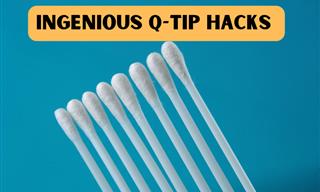
9 Ingenious Q-Tip Hacks for Surprising Daily Uses
We bet you never thought cotton swabs could be so handy around the house!

So You Think You Shop Online Safely? This May Surprise You
If you shop online, you need to know how to avoid fake websites and low quality goods. For these and more online shopping tips, read this article.

33 Mistakes That Shorten the Life Span of Your Appliances
Home appliances often break down before their time. These 33 tips will ensure that they last you longer.
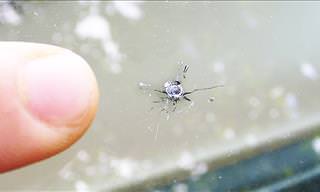
You Don’t Need to Go To A Mechanic to Fix Your Windshield
It can be so frustrating to deal with repairing your windshield. Now the task is made easy with these DIY tricks and tips.

10 Tips for Seniors to Use Tech Like a Pro
Seniors, enhance your tech skills with these tips.
 26:58
26:58
How to Catch a Scam Before It Catches You! - Expert Tips
Never fall for a scam again with these handy tips and tricks.
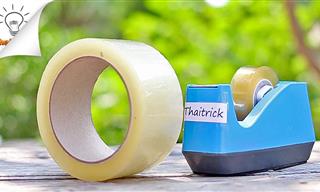 5:33
5:33
9 Practical Ideas With Adhesive Tape Everyone Should Know
These adhesive tape hacks are a must try.

Health after 60 Advice: 7 Things to NOT Wear On Your Walks
If you’re in your 60s, then make sure you don’t make these wardrobe mistakes on your walks.
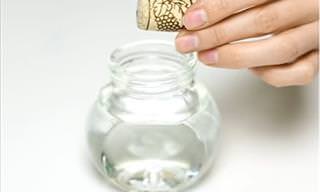 1:25
1:25
This Handy DIY Project Will Have You Collecting Corks
There are so many useful things you can do with a cork. Start collecting your now!
 5:33
5:33
Six Super Useful Tips For Cutting Cucumbers
This tutorial is going to teach you some creative ways to slice a cucumber quickly and creatively!

12 Plants to Keep Your Home Colorful All Winter Long
These houseplants will add color to your house on those cold winter days.
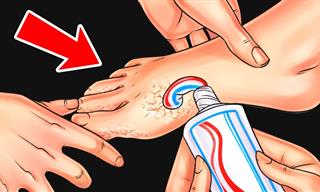 8:47
8:47
12 Great Home Remedies to Cure Many Daily Ailments
Take note of these useful home remedies that will help you treat various daily ailments.
 15:02
15:02
This Guy Bought a Box of 50-Year-Old Kitchen Tools...
Let's have a look with Dave as he tries these 50-year-old kitchen tools, are they still impressive?
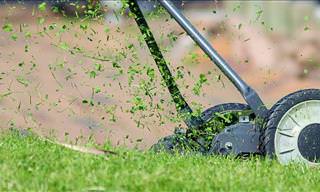
This Ultimate Lawn Guide Says Everything You Need to Mow
This lawn cutting guide will really help you get one up on the Joneses. Pretty soon your garden will be the talk of the town.
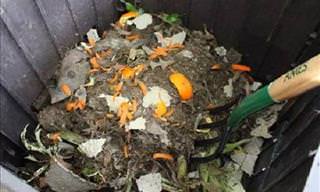
Enrich Your Soil with This Easy-To-Make Compost
Enrich your soil and provide your plants with all the nutrient that they need by making this compost.

4 Tests for Hair Health You Can Perform at Home
To avoid an unpleasant surprise about the poor health of your hair, it is recommended to perform the following 4 tests that anyone can do at home in just a few minutes.

Avoid Spending Extra Cash on these Unnecessary Upgrades!
To make sure you don't have buyer's remorse after making a big electrical appliance purchase, avoid these upgrades!

These Tips Will Make Any Meat Taste Like an Expensive Cut
You don't have to buy expensive cuts of meat to get a juicy steak. Here are three tips that'll make a cheap cut taste like an expensive cut.

Manage Stress in Your 50s with These Meditation Techniques
Manage stress in your 50s with these meditation styles.

Financial Planning for Widowhood - 7 Important Tips
Losing a spouse can be extremely stressful and overwhelming. But there are some important financial steps you must take immediately.

Tip: It Is Possible to Peel an Orange in a Few Seconds
Peel oranges in just a few seconds and in the most effective method possible.

Here Are the 8 Biggest Oven Mistakes You Should Avoid
Stop making these mistakes if you want your oven to remain fully-functional for many years to come.

Your Herb Garden Will Flourish with These Helpful Tips
The following six tips will help you grow an abundance of herbs round the year.
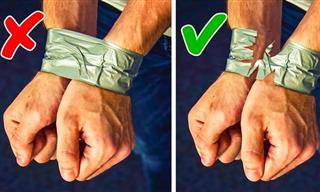 15:56
15:56
18 Must-Know Survival Hacks for Those Tricky Moments
These clever survival hacks can help save your life someday.
 6:31
6:31
10 Everyday Home Hacks To Make Your Life a Breeze
These terrific life tips will make you wonder why you've never thought of them before...

Make Your Toilet Tank Sparkle with This Easy Guide!
Clean a toilet tank like a pro with these steps.
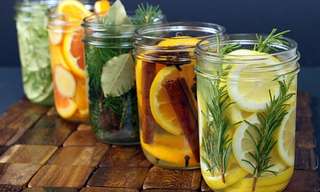
Safe & Natural Recipes to Add Scent to Your Home
Forget those fake, unhealthy air fresheners and chemical-packed scented candles. Make your own natural scents and keep your home fresh.
To enable your Ad-Free Subscription, please fill the fields below
Your subscription was successful, now you can enjoy an ad-free experience!!
Note: To make sure you get no ads, please make sure to log in to your account. If you are logged in already, then refresh the page. The subscription can be cancelled at any time.



